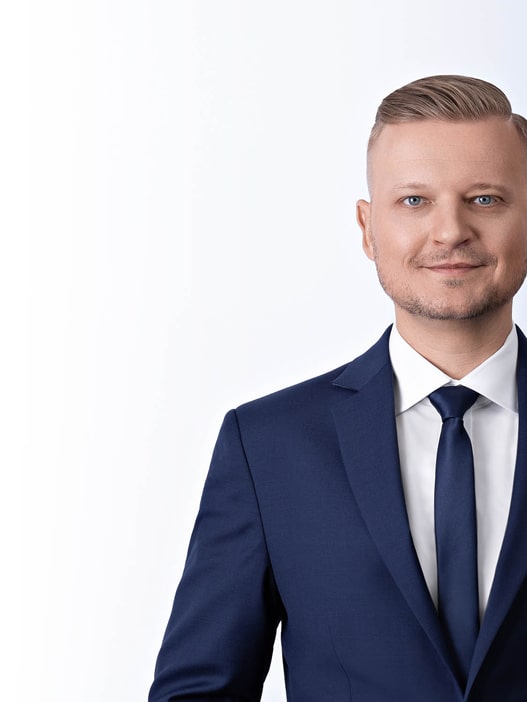M&A outlook for CEE in 2024, balancing dynamism with caution
The first quarter of 2024 saw the M&A market in Central and Eastern Europe (CEE) closely mirror broader global economic trends. Much like the rest of Europe, the CEE region experienced a slowdown in economic activity, reflecting global market challenges. Key players like Germany and France experienced significant declines in manufacturing, which had a ripple effect across smaller economies such as Slovakia and the Czech Republic where the automotive industry accounts for a significant portion of GDP (12% and 17% respectively).
Despite these external pressures, the mood among CEE market participants – from private equity (PE) and venture capital (VC) funds to sector investors – remains cautiously optimistic. This optimism is largely driven by better alignment in pricing expectations between buyers and sellers and increased market consolidation across various industries. While global investors have been less prominent, domestic players have taken the initiative, currently dominating the M&A landscape with pending deals and direct investments.
Recent developments in 2024: Q2, July and August
There was a notable increase in all types of M&A activity during Q2 of 2024 in the CEE region. Despite the typically slower summer months of July and August, M&A deals showed resilience. Although deal volumes were lower compared to Q2, ongoing interest from specialised funds and strategic investors signals that the region remains a hotspot for investment opportunities. As a result of the economic slowdown from earlier months, many investors consolidated their positions, focusing on sectors with long-term growth potential, such as technology, infrastructure, real estate and energy.
The pricing gap between buyers and sellers is narrowing, particularly in industries such as manufacturing. This serves to facilitate deals that were previously on hold. Nevertheless, deals continue to take longer to close, as they become more complex and susceptible to last-minute changes or cancellations.
Key trends and sectoral shifts
Several emerging trends will shape the M&A market in CEE for the remainder of 2024.
- Post-pandemic consumer behaviour: The shift in consumer preferences post-pandemic continues to impact the real estate and travel sectors. Demand for mixed-use real estate is rising as the workplace evolves and traditional office settings lose appeal. The “revenge travel” trend, where consumers are eager to travel after pandemic restrictions, is also fuelling growth in the travel and tourism sector. Investors are viewing these trends as long-term opportunities and are adjusting their strategies accordingly.
- ESG (Environmental, Social and Governance) considerations: ESG factors are increasingly critical in M&A decisions. Decarbonising of the energy sector is a particularly significant driver of deals in the CEE region. Companies with strong ESG strategies are attracting more investment and differentiating themselves from competitors. Sustainability is also becoming a key value driver, particularly in the real estate and energy sectors, making ESG a focal point in dealmaking.
- Private equity’s “Waiting Game”: Private equity funds are sitting on significant capital reserves, but many are reaching the end of their investment periods and face pressure to exit their holdings. However, in a less than optimal market, both buyers and sellers are reluctant to move, choosing instead to wait for more favourable pricing conditions. The question remains: when will this standoff come to an end. Recent indicators suggest that a resolution is on the horizon.
- Tech sector & IT consolidation: The tech landscape in CEE remains a bright spot amid economic uncertainty. Several governments in the region have set up sector-specific funds that operate under the “fund-of-all-funds” model. Specialised PE and VC investors are drawn to the tech industry due to lower capital acquisition costs and a deep talent pool. The sector is ripe for consolidation, offering significant growth potential.
Adaptability and resilience: CEE’s strengths
What sets the CEE region apart is its adaptability and resilience in the face of global economic challenges. Its mix of strong automotive, manufacturing and tech sectors has helped it weather global downturns better than some of its Western counterparts. The increasing use of AI in M&A processes is also streamlining tasks and reducing risks, further enhancing efficiency during uncertain times.
Challenges and opportunities ahead
While cautious optimism prevails, challenges remain, particularly in securing financing due to high interest rates and inflation. Companies with access to capital are in a stronger position to close deals, especially in sectors where valuations are currently depressed. Consolidation remains a dominant theme as companies seek to strengthen their market positions in response to mounting economic pressures.
The legal sector anticipates an M&A rebound
Despite the slow-down seen in 2023 and early 2024, law firms across the CEE region are ramping up their capacity to handle an expected surge in M&A activity. There is a growing consensus that the market is nearing the end of its downtrend and legal professionals don’t want to be caught off guard as new projects emerge.
The road ahead: Measured optimism for CEE’s M&A market
As we approach the latter half of 2024, cautious optimism continues to define CEE’s M&A market. Although high interest rates and inflation will remain hurdles, the region’s inherent strengths, adaptability, market maturity and appeal to specialised funds lay a solid foundation for future growth. Despite downturns in larger manufacturing sectors like those in Germany and France, the region’s ability to leverage emerging trends like ESG-focused investments offers a clear path toward recovery.
In conclusion, while a dramatic rebound may not be imminent, the CEE’s dynamic market, bolstered by strategic investments and shifting trends, positions it as a resilient player in the global M&A landscape.
Co-authored by:
The cautious optimism shared by many is a reflection of the adaptability and resilience of the CEE market.
Peter Miszczyk, Business Development Manager EMEA at FORDATA
This article was created in collaboration with FORDATA Virtual Data Room, following their recent CEE Expert Webinar and Expert Report, to which Wolf Theiss contributed.
Download the article in English


